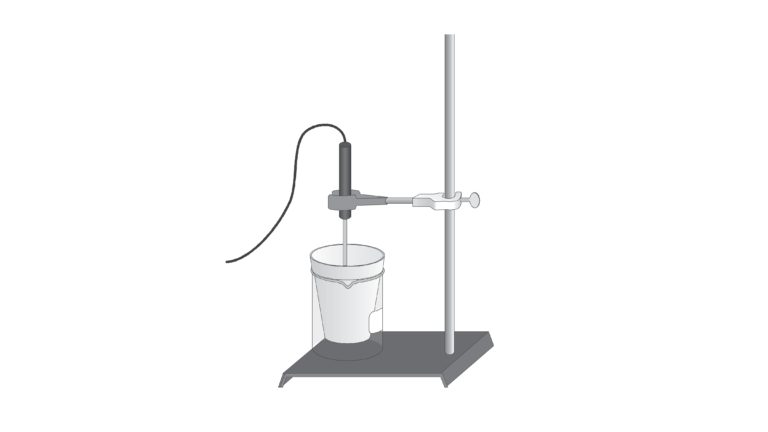The Enthalpy of Neutralization of Phosphoric Acid
Experiment #26 from Advanced Chemistry with Vernier

Introduction
As you have seen in previous experiments, a great deal can be learned by conducting an acid-base reaction as a titration. In addition, acid-base reactions can be observed and measured thermodynamically. In this case, the reaction is carried out in a calorimeter. If the temperature of the reaction is measured precisely, the enthalpy of neutralization of an acid by a base (or vice versa) can be determined. In this experiment, you will react phosphoric acid with sodium hydroxide.
You will use a Styrofoam cup nested in a beaker as a calorimeter. For purposes of this experiment, you may assume that the heat loss to the calorimeter and the surrounding air is negligible. Phosphoric acid will be the limiting reactant in this experiment, and you will accordingly be determining the enthalpy, ΔH, of neutralization of the acid. Selecting a limiting reactant helps ensure that the temperature measurements and subsequent calculations are as precise as possible.
Objectives
In this experiment, you will
- Measure the temperature change of the reaction between solutions of sodium hydroxide and phosphoric acid.
- Calculate the enthalpy, ΔH, of neutralization of phosphoric acid.
- Compare your calculated enthalpy of neutralization with the accepted value.
Sensors and Equipment
This experiment features the following sensors and equipment. Additional equipment may be required.
Option 1

Ready to Experiment?
Ask an Expert
Get answers to your questions about how to teach this experiment with our support team.
- Call toll-free: 888-837-6437
- Chat with Us
- Email support@vernier.com
Purchase the Lab Book
This experiment is #26 of Advanced Chemistry with Vernier. The experiment in the book includes student instructions as well as instructor information for set up, helpful hints, and sample graphs and data.


